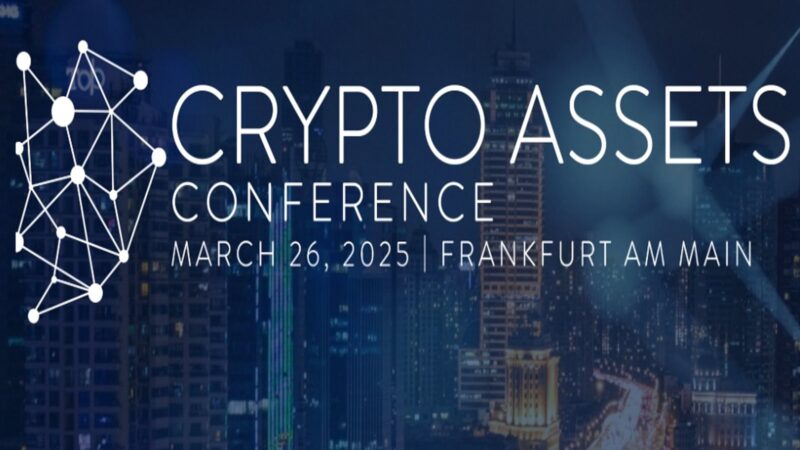Micar requirements: What asset managers have to consider

For Crypto Asset Service Providers (CASPS), the EU regulation is far more than a mandatory exercise: Anyone who uses ESG standards strategically can not only secure themselves regulatory, but also position themselves as a future-proof market participant.
Micar and ESG: Financial service providers underestimate sustainability reporting
However, regulation is also relevant for private banks in private wealth management and independent asset managers, especially if they invest in crypto-assets or manage them for their customers.
ESG standards: A new field for crypto companies and asset managers
Investors and regulatory authorities are increasingly demanding reliable ESG data-a development that now also records crypto companies. Her often criticized energy consumption comes into focus. The MICAR regulation obliges you to disclose relevant environmental figures and create new transparency standards. However, the implementation is complex because the heterogeneous nature of crypto-assets implies individual analyzes and methodics.
Micar has been in force since June 29, 2023, and the regulations relevant to the ESG reporting apply from December 30, 2024. In Germany, crypto companies with a micar license must already publish the ESG data. While transition periods are still applying for some companies, the regulations are mandatory at the latest from December 31, 2025.
The European Securities and Market Authority (ESMA) defines four central report categories per crypto-asset:
- Basic information: Emittenter identity, description texts for the technology used.
- Mandatory information: Annual energy consumption in kilowatt hours (kWh). While the basic and compulsory information from every crypto asset service provider and regardless of the crypto asset must be provided, the following information is only to be published if the energy consumption of the asset exceeds a limit and the CASP provides certain services.
- Additional information: CO₂ emissions, share of renewable energies sustainability indicators per transaction of the crypto asset.
The fourth category is currently to be published purely: - Optional information: Further sustainability indicators, sustainability strategies and goals.
The data must not only be freely accessible and up -to -date, but also to be subject to an annual examination. Incorrect or manipulated information could result in sanctions. In addition, further operational requirements for CASPs are created in practice, since in addition to the obligation to review annual review, there must also be monitoring on “material change”-in this case the data ad-hoc must be updated.
This becomes an operational process from a one-time effect that has to secure permanent compliance.
When are private banks and asset managers affected?
For private banks and independent asset managers, Micar is particularly relevant if you keep crypto-assets directly for your customers or offer products with crypto reference. Here are some concrete scenarios:
- Direct Investments in Crypto-Assets: Banks and asset managers who offer or manage their customers to offer or manage their customers must ensure that the providers they use provide micar-compliant ESG data.
- Tokenized assets: If traditional assets (such as real estate or bonds) are token, they could fall under Micar. Providers must then meet transparency obligations.
- Crypto funds and structured products: Anyone who sells crypto products should ensure that the underlying assets are micar-compliant to minimize regulatory risks.
- Advice and Due Diligence: Asset managers who integrate crypto investments into their ESG strategies must integrate sustainability-related information into their DUE diligence processes.
For WEALTH Manager, this means that the regulatory testing of crypto-assets becomes more complex, and a deeper analysis of the ESG criteria is required to avoid compliance risks.
ESG accounting: a balancing act between regulation and practice
The evaluation of the energy consumption of blockchain technologies is a challenge. While proof-of-work (POW) is considered to be particularly energy-intensive, proof-of-stake (POS) consumes significantly less electricity. Uniform calculation standards have not yet existed. Two methods have established themselves:
- Top-Down-Analyse: Analysis of empirical network data (e.g. hash rate) for estimating the entire performance. This method comprehensively evaluates the total consumption by including central parameters such as the average efficiency of the hardware used.
- Bottom-Up-Analyse: Use of crawlers and software tools for the identification of active nodes and calculation of energy consumption based on the hardware and software used. The analysis of individual network nodes enables detailed conclusions about the energy consumption of specific consensus mechanisms.
Both approaches pose methodical challenges. Central to ensuring high -quality input data are professionally carried out measurements, if possible within certified. Certified test procedures or guidance on the part of the ESMA could ensure more standardization.
In particular, due to the monitoring, which usually have no connection to the core business of the provider, also due to permanent operational, is used for the fulfillment of the requirements for third -party providers. Strategic partnerships with technology providers and consulting companies can help to make compliance processes more efficient.
ESG as a differentiation feature: from the regulatory must to a strategic opportunity
While institutional investors are increasingly demanding ESG criteria, the awareness of sustainability as a competitive advantage within the crypto scene is still expandable. A proactive ESG strategy could not only minimize regulatory hurdles, but also attract new investors and strengthen the reputation by refuted common prejudices.
More and more blockchain projects are relying on less energy-intensive technologies such as “Zero knowledge Proofs” or off-chain solutions to reduce energy consumption. The market for “green cryptocurrencies”, which specifically rely on sustainable practices, is growing. Mining farms are also increasingly falling back on renewable energies, since it often offers economic advantages over other energy sources and at the same time minimizes your CO₂ footprint.
A promising field is the tokenization of environmental certificates. CO₂ compensation mechanisms based on blockchain could help companies present their environmental balance more transparently. This is where a new financial market is created that combines ESG standards with digital innovations.
The regulation is not only absorbed in the EU. In the United States, there are first debates about sustainable crypto guidelines, while China has regularly taken drastic measures against energy-intensive mining in the past-but whether the essential driver was the environmental balance or political interests can be questioned.
In Asia, some countries specifically rely on subsidies for environmentally friendly blockchain technologies. These developments underline the need for an internationally coordinated regulation.
Recommendations for action: This is how private banks and asset managers remain competitive
In order to meet the new ESG requirements, asset managers and banks should focus on the following measures:
- Secure data quality: Model the ESG measuring methods transparent and resilient.
- Use certified procedures: Official test procedures reduce regulatory risks.
- Implementing monitoring tools: Use automated systems for current consumption recording.
- Greenwashing vermeiden: Independent audits strengthen credibility.
- Proactive communication: Integrate ESG data specifically into investor and customer communication.
- Early compliance test: Votes with supervisory authorities minimize uncertainties.
- Technology optimization: Integrate sustainable innovations into the infrastructure. ESG criteria are more than a regulatory trend in the crypto sector-they could become the basis of a sustainable and long-term successful market strategy. A well-founded ESG analysis is essential for private Wealth managers who want to offer their customers sustainable and future-proof investments. Anyone who focuses on transparent ESG indicators and energy-efficient technologies at an early stage will not only position themselves as a compliance with the rules, but as a pioneer in a new era in digital finance.
A promising field is the tokenization of environmental certificates. CO₂ compensation mechanisms based on blockchain could help companies present their environmental balance more transparently. This is where a new financial market is created that combines ESG standards with digital innovations.
About the authors:
Christoph Wronka Is Director and heads the anti-financial crime team within the Audit & Advisory area at Baker Tilly in Germany. The Certified Anti-Money Lundering Specialist and Certified Internal Auditor is a member of the Technical Expert Group on Crypto Asset Service Providers and Anti-Money Lundering/Countering of Terrorism from the European Banking Supervisory Authority EBA and a member of the Expert Boards at the Blockchain Federal Association.
Tim Zölitz At first was Cro at Crypto Risk Metrics before it was appointed CEO in July 2024. There he is responsible for the provision of software and data products to guarantee that the regulatory requirements for crypto-assets on the financial market guarantee. He is also a co-founder and on the board of the Blockchain Association Schleswig-Holstein EV.





